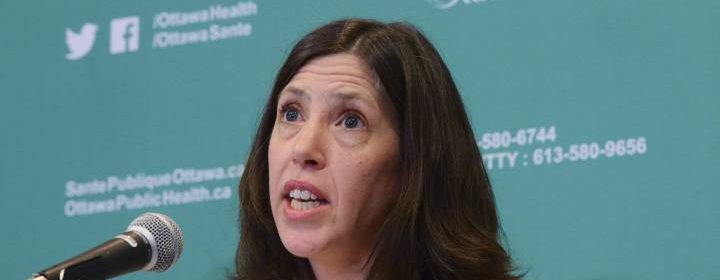Here’s what needs to be in place before Ottawa can relax coronavirus restrictions

Ottawa’s death toll in connection with the novel coronavirus continues to climb as public health officials start to outline the criteria needed to lift the city’s pandemic restrictions.
Ottawa Public Health reported seven new deaths connected to COVID-19, the disease caused by the coronavirus, between Tuesday and Wednesday.
The latest figures rival Ottawa’s deadliest day of the pandemic to date and bring the city’s death toll to 32.
The public health unit also identified 44 new lab-confirmed cases of the virus in Ottawa, pushing the local total to 943.
Ottawa’s climbing number of infections comes as the Ontario government declared earlier this week that the province’s COVID-19 cases had peaked thanks to effective efforts in flattening the curve.
In a verbal update on the coronavirus pandemic given before the latest local COVID-19 figures were released Wednesday, the city’s medical officer of health, Dr. Vera Etches, told Ottawa city council that it was too soon to definitively say whether the nation’s capital had also hit its peak.
Putting the rising count of infections aside, Etches told council during its biweekly meeting that the more important metric to consider was the number of people hospitalized in relation to the virus.
Etches said there are signs of stability in hospitalizations, and while it’s too soon to say whether current figures mark any statistically significant trends, “to the eye” it seems there has been a recent decline on this front.
“This picture is very similar to the picture across the province of Ontario, where the premier was talking about having seen the infections peak,” she said.
[ Sign up for our Health IQ newsletter for the latest coronavirus updates ]
Amid optimism about a peak in cases comes inevitable questions about when Ottawa’s state of emergency restrictions could start to be lifted.
While many of those decisions will come directly from the province and the federal government, Etches did outline the criteria Ottawa Public Health will be considering in the weeks ahead in terms of its advice to residents, businesses and city staff.
Firstly, transmission of the disease needs to be under control — that’s tracked through the number of cases, hospitalizations and the aforementioned “peak.”
While infection rates seem stable with regard to the general population, there’s a different situation in Ottawa’s long-term care homes, where ongoing outbreaks account for more than a quarter of the city’s total COVID-19 cases.
Before any wide-scale relaxation can begin, Etches said Ottawa needs to intervene in these “hot spots” and support the city’s vulnerable residents living in the long-term care homes currently facing outbreaks.
The Ontario government confirmed Wednesday that it will push local health units to test every resident and staff member of the province’s long-term care homes.
Etches said Ottawa Public Health is following this direction and will have to coordinate with hospitals and other partners in the city’s health-care system to achieve full testing in local homes.
With regard to testing, the city will also need to institute more robust monitoring of the virus throughout the community before relaxing its restructions.
To date, testing has been mostly focused on detecting early cases and identifying the disease in vulnerable populations and frontline workers. Etches said the next steps would be a test designed specifically to identify antibodies — a serology test — which would determine whether an individual was “likely” immune to COVID-19.
There are currently no clinically validated tests of this kind in Ontario, Etches noted during the council meeting.
The city will also need to have a handle on the flow of new cases into Ottawa, which requires continued measures to regulate travel.
When health officials are confident transmission of the virus is well-managed and surveillance programs are in place to properly monitor its spread, decisions about which parts of society can reopen will be determined by the preventative measures in place.
Schools and workplaces will need to prepare plans on how they might operate while mitigating risks of spreading the virus, for example, before reopening.
Similarly, work that takes place outdoors might be prioritized to reopen before businesses that have to operate in close quarters.
Mayor Jim Watson told media at a press conference later in the day that he spoke to Premier Ford Tuesday evening about how quickly the province should move to reopen sectors of the economy.
Watson said the way businesses will reopen will likely be a staggered process, so as not to “overwhelm” public services such as transit. The goal is to avoid rushing back to normality and ultimately backtrack in terms of new infections.
“We want to see the economy opened but we don’t want to rush into it and get ourselves into a bigger challenge when we end up having to reclose businesses,” he said.
Etches said during council that Ottawa Public Health had heard some ideas from residents about ways to help individuals connect during the pandemic without putting vulnerable members of the community at risk.
One idea was a slow expansion of the household “bubble” to allow two older adults living alone to visit one another in isolation or let two families meet so stir-crazy kids could have a playdate in a controlled setting.
“These are the kinds of things we are exploring,” Etches said.
Source: Read Full Article


